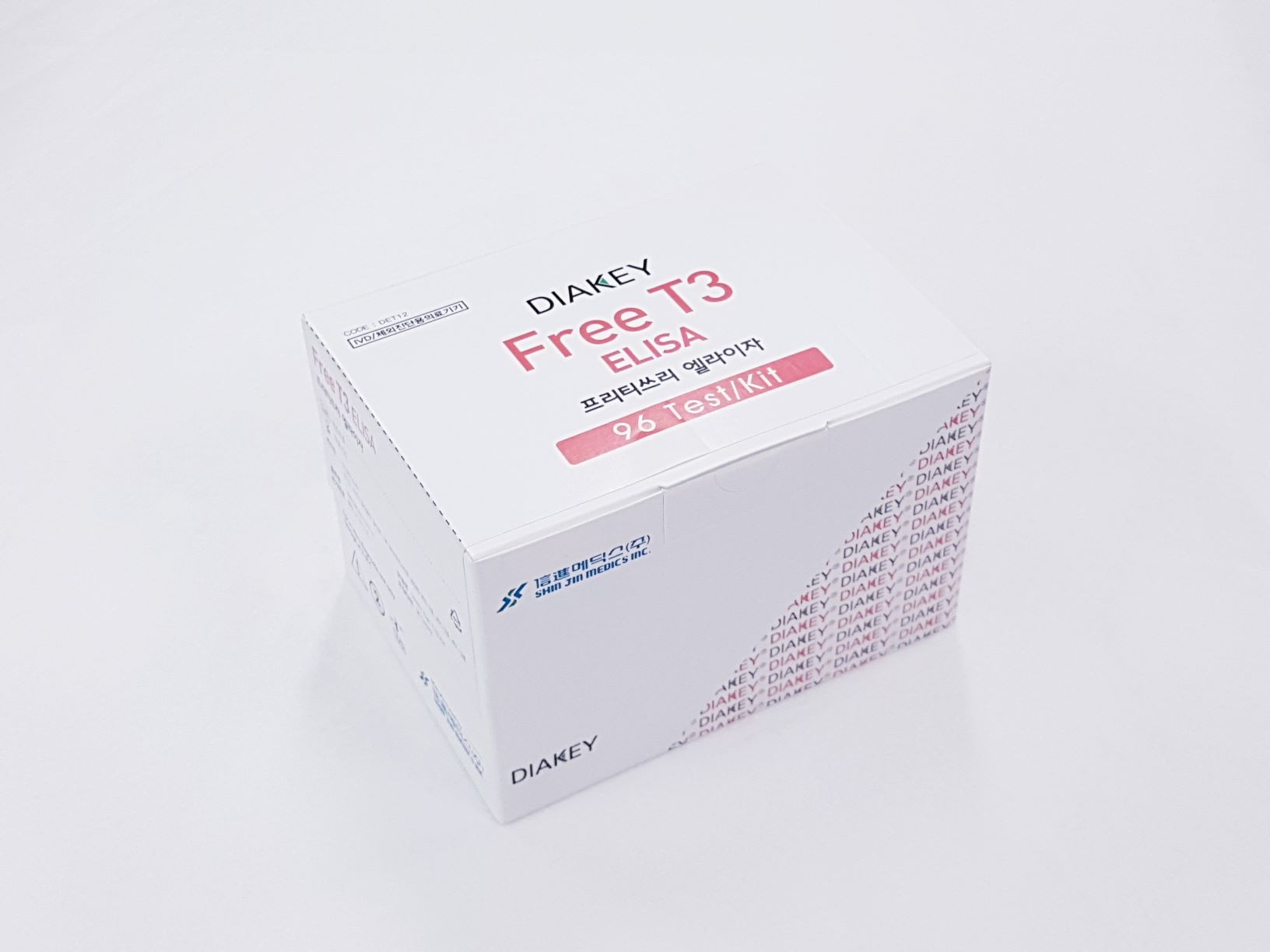DIAKEY Free T3 ELISA
Enzyme Immunoassay for quantitative determination of Triiodothyronine (Free T3) in human serum or plasma
Summary
-
KFDA Registration No
14-3215
-
CAT No
DET12
-
TEST METHOD
ELISA
-
SAMPLE VOLUME
20 ul
-
INCUBATION TIME
60'+10'RT
-
STD RANGE
0-30 pg/ml
Download File
Intended Use
Enzyme Immunoassay for quantitative determination of Triiodothyronine (Free T3) in human serum or plasma
PRINCIPLE OF THE ASSAY
The DIAKEY Free T3 is based on a competitive immunoassay (ELISA). During the incubation, the sample/calibrator FT3 competes with the T3 labeled with HRPO (conjugate) for the specific sites of the anti-serum coated on the plate. After washing, Chromogen reagent is added to each well and enzyme reaction is allowed proceed. During the enzyme reaction a blue color will develop if antigen is represent. The intensity of the color is proportional to the amount of FT3 present in the sample. The color intensity is determined in a microplate spectrophotometer at 450nm (reference 620nm).
Use Precaution
Be careful when handling all samples, reagents, or devices used in the test as they may be the source of infection.
All reagents, human body samples, etc. are handled at the designated location.
- Do not use mixed reagents from different lots.
- Do not use reagents beyond the expiration date.
- Use distilled water stored in clean container.
- Use an individual disposable tip for each sample and reagent, to prevent the possible cross-contamination among the samples.
- Rapidly dispense reagents during the assay, not to let wells dry out.
- Wear disposable globes while handling the kit reagents and wash hands thoroughly afterwards.
- Do not pipette by mouth.
- Do not smoke, eat or drink in areas where specimens or kit reagents are handle.
- Handle samples, reagents and loboratory equipments used for assy with extreme care, as they may potentially contain infectious agents.
- When samples or reagents happen to be spilt, wash carefully with a 1% sodium hypochlorite solution.
- Dispose of this cleaning liquid and also such used washing cloth or tissue paper with care, as they may also contain infectious agents.
- Avoid microbial contamination when the reagent vial be eventually opend or the contents be handled.
- Use only for IN VITRO.

